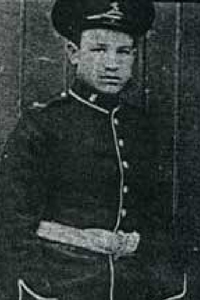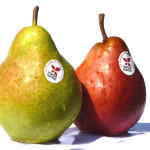8th September 1914
At 7:07am men from the Dorsets and the Cheshires were assembled to witness a brutal side of Army life. Thomas Highgate, of the 1st Bn Queen’s Own Royal West Kent Regiment, had been found guilty of desertion two days previously and was sentenced to death by firing-party.
Brigadier-General Gleichen remembers that he had “the unpleasant duty to perform of detailing a firing-party to execute a prisoner.” Who made up that firing-party remains a mystery. But poor Thomas Highgate was made an example of at this critical time for the Allies. His execution was broadcast as part of Army Routine Orders for that day to the entire BEF.

Thomas had thrown away his uniform and was dressed as a civilian. Fortune was not on his side. He was discovered by a gamekeeper in a barn. The gamekeeper happened to be English. Worse still, he was an ex-soldier. Thomas was immediately apprehended. He had no representation and called no witnesses. He was the first soldier to be executed in The Great War. He was pardoned in 2006* along with 306 other men.
The cruelest part of the story for me isn’t mentioned in any of the other documents I’ve read so far. Thomas Highgate was tried in Tournan-en-Brie. That’s almost 25 miles away from Boissy-le-Châtel. Was he purposely moved to the frontline so that his execution was witnessed by frontline troops?
Highgate’s name is remembered on the memorial to the missing at La Ferté-sous-Jouarre on the south bank of the River Marne.
No mention of this incident is made in the war diary for the Dorsets or the Cheshires.
The Dorsets marched with the rest of the 15th Brigade as rearguard to the 5th Division. The BEF was now arranged into Brigade Areas which complicated matters for the Staff officers (namely Staff Captain A.L. Moulton-Barrett) of the 15th Brigade who were charged with billeting and signalling. they were now dealing with lots of other units: artillery, Field Ambulance, cyclists, signallers, Royal Engineers etc.
The Brigade was in support of the 13th Brigade. Although they could hear and see (in terms of burning villages) fighting on both flanks, they didn’t engage the enemy, although Gleichen reports of friendly-fire once more. This was understandable with the heavily undulating and wooded terrain. Prisoners, transport, artillery and mixed up units all added to the confusion.
The Dorsets passed through Doue, Mauroy, down towards St Cyr-Sûr-Morin via Les Hameaux, where they halted at 5:30pm. The weather had turned from hot to wet; rain at last. By 6:30 the Dorsets had moved on again, up a steep hill, to billets in Charnesseuil. They had marched 10 miles.
* The facts on this BBC page are not very accurate. He wasn’t 17 when he died, he was 19, and his unit was fairly intact at that point. Indeed many of the facts surrounding this execution are hazy and lots of it need primary source reference. The Wikipedia entry also has quotes without sources.
As a drop the dead donkey item, the cap badge from the Queen’s Own Royal West Kent Regiment was used by the home guard in Dad’s Army.
